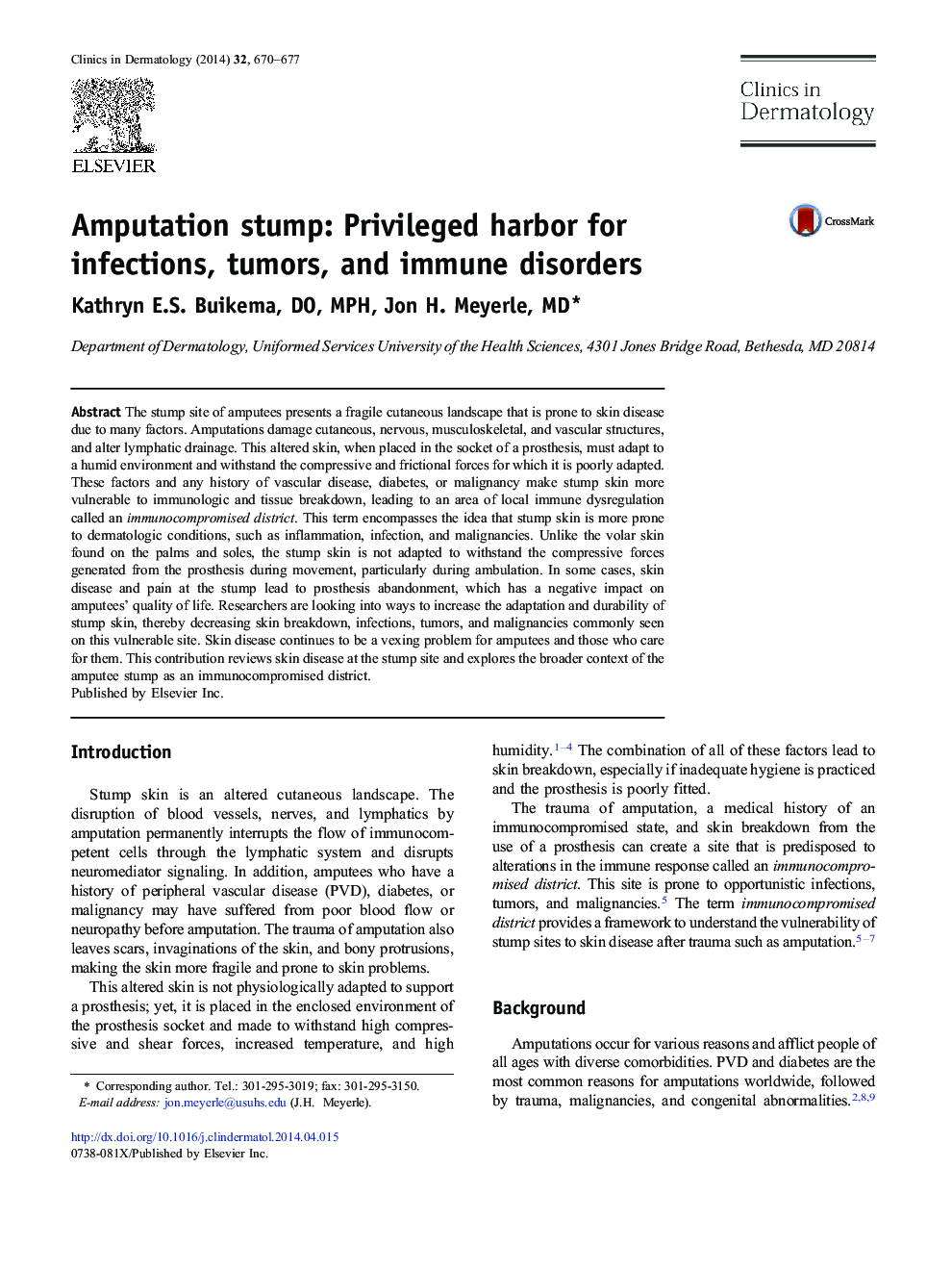| کد مقاله | کد نشریه | سال انتشار | مقاله انگلیسی | نسخه تمام متن |
|---|---|---|---|---|
| 3194146 | 1201378 | 2014 | 8 صفحه PDF | دانلود رایگان |
The stump site of amputees presents a fragile cutaneous landscape that is prone to skin disease due to many factors. Amputations damage cutaneous, nervous, musculoskeletal, and vascular structures, and alter lymphatic drainage. This altered skin, when placed in the socket of a prosthesis, must adapt to a humid environment and withstand the compressive and frictional forces for which it is poorly adapted. These factors and any history of vascular disease, diabetes, or malignancy make stump skin more vulnerable to immunologic and tissue breakdown, leading to an area of local immune dysregulation called an immunocompromised district. This term encompasses the idea that stump skin is more prone to dermatologic conditions, such as inflammation, infection, and malignancies. Unlike the volar skin found on the palms and soles, the stump skin is not adapted to withstand the compressive forces generated from the prosthesis during movement, particularly during ambulation. In some cases, skin disease and pain at the stump lead to prosthesis abandonment, which has a negative impact on amputees’ quality of life. Researchers are looking into ways to increase the adaptation and durability of stump skin, thereby decreasing skin breakdown, infections, tumors, and malignancies commonly seen on this vulnerable site. Skin disease continues to be a vexing problem for amputees and those who care for them. This contribution reviews skin disease at the stump site and explores the broader context of the amputee stump as an immunocompromised district.
Journal: Clinics in Dermatology - Volume 32, Issue 5, September–October 2014, Pages 670–677
